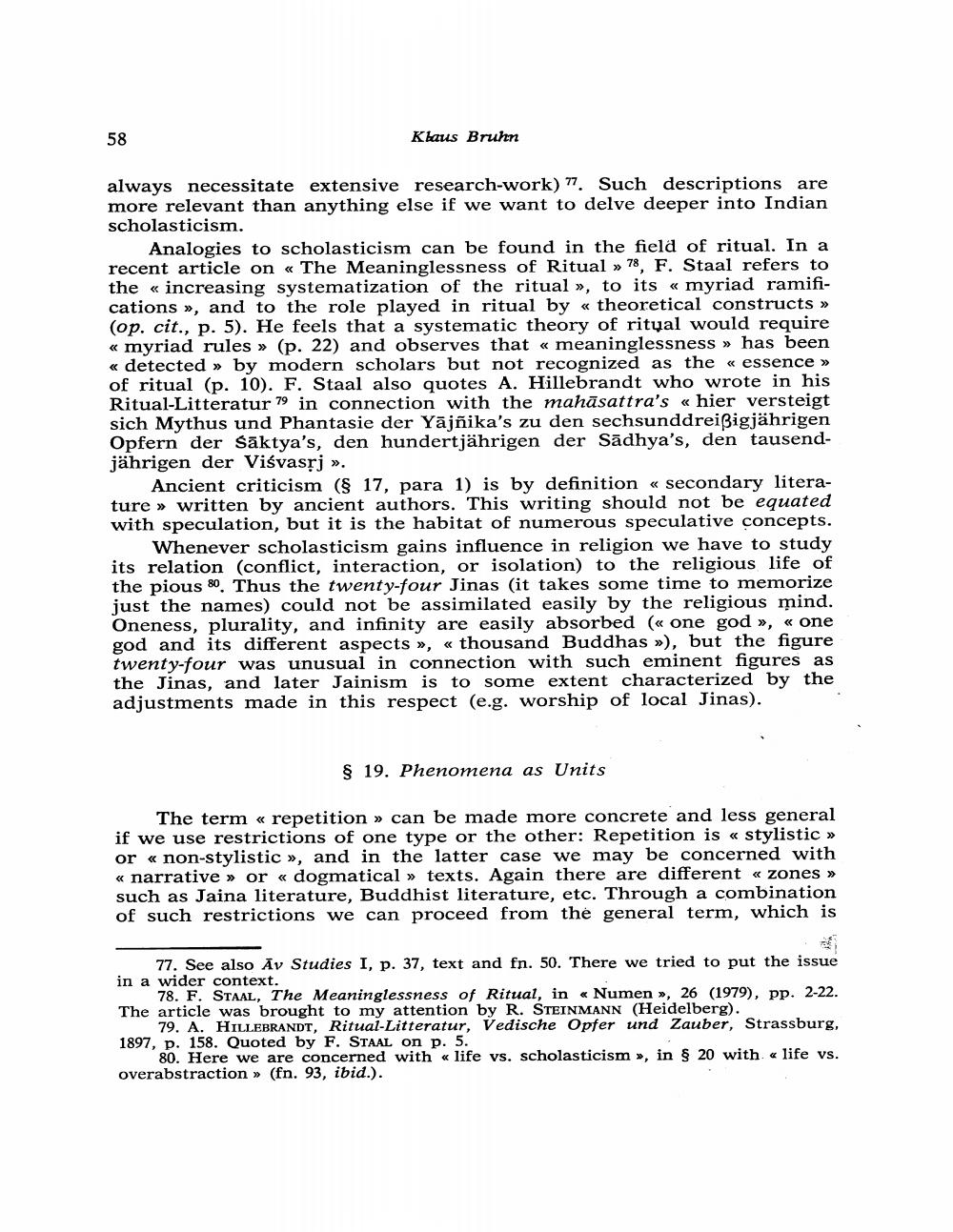________________
58
Klaus Bruhn
always necessitate extensive research-work) 7. Such descriptions are more relevant than anything else if we want to delve deeper into Indian scholasticism.
Analogies to scholasticism can be found in the field of ritual. In a recent article on «The Meaninglessness of Ritual » 78, F. Staal refers to the « increasing systematization of the ritual », to its « myriad ramifications », and to the role played in ritual by « theoretical constructs >> (op. cit., p. 5). He feels that a systematic theory of ritual would require « myriad rules » (p. 22) and observes that « meaninglessness » has been « detected by modern scholars but not recognized as the « essence >> of ritual (p. 10). F. Staal also quotes A. Hillebrandt who wrote in his Ritual-Litteratur 79 in connection with the mahāsattra's « hier versteigt sich Mythus und Phantasie der Yājñika's zu den sechsunddreißigjährigen Opfern der Sāktya's, den hundertjährigen der Sādhya's, den tausendjährigen der Visvasrj ».
Ancient criticism ($ 17, para 1) is by definition « secondary literature » written by ancient authors. This writing should not be equated with speculation, but it is the habitat of numerous speculative concepts.
Whenever scholasticism gains influence in religion we have to study its relation (conflict, interaction, or isolation) to the religious life of the pious 80. Thus the twenty-four Jinas (it takes some time to memorize just the names) could not be assimilated easily by the religious mind. Oneness, plurality, and infinity are easily absorbed (« one god », « one god and its different aspects », « thousand Buddhas »), but the figure twenty-four was unusual in connection with such eminent figures as the Jinas, and later Jainism is to some extent characterized by the adjustments made in this respect (e.g. worship of local Jinas).
§ 19. Phenomena as Units
The term « repetition » can be made more concrete and less general if we use restrictions of one type or the other: Repetition is < stylistic >> or « non-stylistic », and in the latter case we may be concerned with « narrative » or « dogmatical » texts. Again there are different « zones >> such as Jaina literature, Buddhist literature, etc. Through a combination of such restrictions we can proceed from the general term, which is
77. See also Āv Studies I, p. 37, text and fn. 50. There we tried to put the issue in a wider context.
78. F. STAAL, The Meaninglessness of Ritual, in «Numen >> 26 (1979), pp. 2-22. The article was brought to my attention by R. STEINMANN (Heidelberg).
79. A. HILLEBRANDT, Ritual-Litteratur, Vedische Opfer und Zauber, Strassburg, 1897, p. 158. Quoted by F. STAAL on p. 5.
80. Here we are concerned with « life vs. scholasticism», in § 20 with « life vs. overabstraction > (fn. 93, ibid.).




